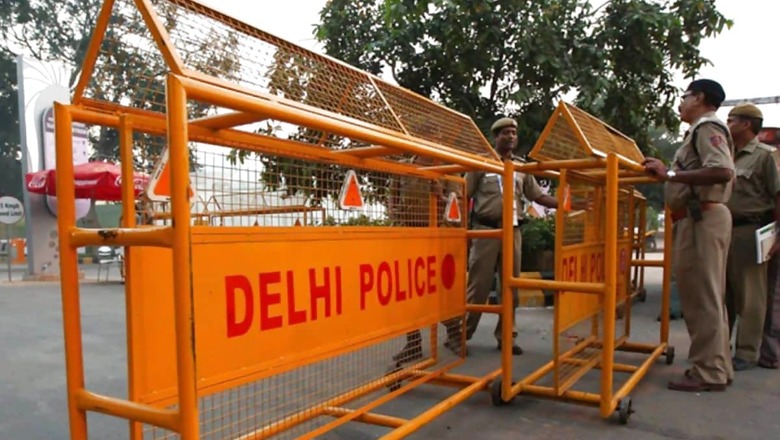
views
The Delhi Police headquarters have decided to take back control of Police Control Room (PCR) vans, starting April 1. In order to better control the crime rate in the city, PCR vans, also referred to as Mobile Patrol Vehicles (MPV), will now be under the control of the Central Police Control Room (CPCR).
Former Commissioner of Police Rakesh Asthana and other senior police officers explained the reasons for the rollback of PCR integration that had taken place in September 2021. Notably, CNN-News18 was the first to report last year that the integration is likely to be rolled back.
The deliberations on the rollback gained pace in January this year, after a terrifying hit and drag case took place, in which a 20-year-old woman was dragged beneath a Baleno car for several kilometers in Delhi’s Sultanpuri area. She had remained undiscovered for hours, by any of the multiple PCR vans that were on patrolling duty in the area.
Calling the roll back as “revamp”, a senior officer said following several meetings, presentations and discussions, a detailed plan was chalked out to bring control of these emergency response vehicles, back to the central command.
“Before the integration of PCR with districts, any distress call that landed in the Central Police Control Room (CPCR) was sent to the concerned police station and the nearest PCR van simultaneously. The PCR van then reported to the spot and sent a detailed action-taken report to the CPCR. After the integration, the PCR vans were answerable to the police stations they were attached with. Their positioning, the number of staff to be deployed and other operational and logistical requirements were to be decided by the police station. Now, the control is being brought back to the CPCR. Districts have been informed. The execution is expected April 1 onwards,” said a senior officer aware of the roll back, requesting not to be named.
Lapses in PCR Van Operations, Response Time
After the Sultanpuri hit and drag case, the Delhi Police headquarters had also sent an official communication to the Ministry of Home Affairs that it is looking into the effectiveness of the PCR–District integration. This was the first time such an observation was made officially, since the merger.
“Findings of an internal report in Sultanpuri case had pointed towards certain lapses in the operation of PCR vans that night which was followed by disciplinary action. Even though Sultanpuri case is being looked upon as the last ‘brick in the wall’, as far as the taking back the control from districts is concerned, it was being discussed since last year, much before the incident,” said another officer, privy to the developments.
PCR Vans Integration Ordered by Former Commissioner of Police
Former CP Rakesh Asthana had ordered the integration which is being undone following multiple reports highlighting inefficiency of the current system. After the integration, the PCR vans and emergency response vehicles of the Delhi Police had come under the direct control of 15 different policing districts which the Capital is divided into.
However, the first meeting on its roll back was held in 2022, after Sanjay Arora succeeded Asthana as Delhi’s Commissioner of Police. According to reports, Arora was apprised about the poor feedback on the merger during a meeting in the third week of August. Following a detailed presentation, Arora had then asked for suggestions to further improve the functioning of the system.
Low Visibility & Low Maintenance Among Key Reasons for Rollback
One of the concerns since the integration of PCR vans was its decreased visibility on roads of Delhi. High visibility is often believed to be a deterrence to street crime. The officers said that earlier before the integration, a PCR staff used to complete a 12-hour shift followed by 24 hours of rest time. However, after the integration with the districts, shifts of the PCR staff were cut short to eight hours, followed by eight hours of rest time. Also, the personnel now reported to police stations for change of shift and as there was no dedicated staff for the PCR vans.
The police personnel were deployed with PCR vans owing to their availability and depending upon their requirement for other miscellaneous tasks at the given time, the officers said.
Earlier, when the PCR vans were controlled by the CPCR, a pool of back-up vehicles was maintained in case of breakdown. The officers said that the districts do not have any pool of additional PCR vehicles. In this case, if there is a breakdown, the vehicle needs to be sent back to workshop and can only report to duty once repaired. This not only leads to a shortage of emergency response vehicles in a district, but also becomes a reason for low visibility, they said.
Delayed Response Time
Believed to be one of the major issues, the response time of these PCR vans or emergency response vehicles had increased ever since the integration. Officers said that every PCR staff was equipped with a Mobile Data Terminal (MDT), a handheld device, on which they press the ‘reached’ button to confirm that they have arrived at the spot they were asked to report to by the command centre.
In many incidents, the staff reports its arrival at the spot much before reaching the destination, under the pressure of maintaining the low response time. This has been confirmed by the staff at the command centre as all these vehicles are GPS enabled, the officers said.
Read all the Latest India News here
















Comments
0 comment